Loading
Journal of Cellular Immunology
ISSN: 2689-2812
Latest Articles
Estrogen Receptor Alpha Contributes to Intestinal Inflammation in a Murine Model of Ileitis
Alyssia V. Broncano , Wendy A. Goodman
Inflammatory bowel diseases (IBD) are inflammatory conditions characterized by chronic and recurrent intestinal inflammation. IBD affects nearly five million people worldwide, with an estimated prevalence of 245.3 cases per 100,000 people in the United States alone. The incidence of IBD is steadily increasing in industrialized countries and is appearing more often developing countries, contributing to its rise as a global disease burden.
J Cell Immunol, 2025, Volume 7, Issue 4, p127-132 | DOI: 10.33696/immunology.7.232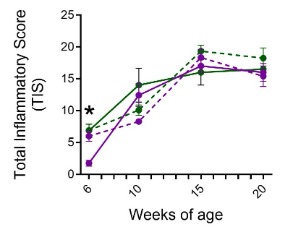
Salivary Lymphocyte Phenotypes Differ from Blood and Serve as a Model for Other Mucosal Fluids
Muruganantham Lillimary Eniya , Shervin Dokht Sadeghi Nasab , Albert Judith , Frederick Clasen , David Moyes , Saeed Shoaie , Newell Johnson , Priya Kannian , Stephen Challacombe
The oral cavity is part of the mucosal immune system of the body, embracing all mucosae including lungs, gut and nose. The oral mucosa is the gateway for a plethora of gastrointestinal and respiratory antigens and is capable of mounting a very strong mucosal immune response. Mucosal immunity is structurally and functionally similar in all mucosae and, soluble mediators including cytokines, chemokines, immunoglobulins and other proteins have been well studied in many diseases.
J Cell Immunol, 2025, Volume 7, Issue 4, p133-138 | DOI: 10.33696/immunology.7.233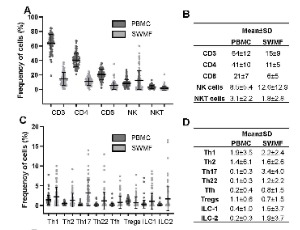
Serum Cytokines During Acute Respiratory Infection and Relationship to Age
Aanya Gupta , Holden T. Maecker
Influenza and other seasonal respiratory viruses affect millions annually. While age is generally known to be correlated with risk and outcome, the mechanisms underlying thesedifferences, especially in the infected, have been poorly defined. Previous studies have focused primarily on cell-subset shifts in older adults, leaving a gap in understanding of how cytokine responses vary across the full age spectrum.
J Cell Immunol, 2025, Volume 7, Issue 4, p139-145 | DOI: 10.33696/immunology.7.234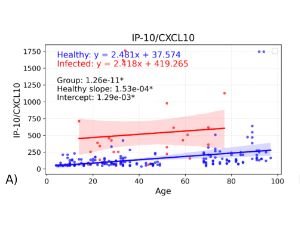
Risk Factors of Chronic Spontaneous Urticaria with COVID-19 Vaccination: A Cross-Sectional Study
Hossein Esmaeilzadeh , Mohammad Amin Gholami , Negar Mortazavi , Mohammad Reza Yousefi , Mohebat Vali
Chronic Spontaneous Urticaria (CSU) is a multifactorial disease with an incompletely understood etiology. COVID-19 vaccines can influence the immune system. This study evaluates the risk factors and comorbidities associated with CSU in patients who developed CSU following COVID-19 vaccination or infection.
J Cell Immunol, 2025, Volume 7, Issue 4, p173-180 | DOI: 10.33696/immunology.7.236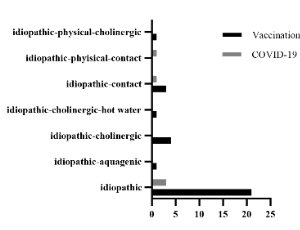
Mechanisms and Therapeutic Strategies to Overcome Immune Checkpoint Inhibitor Resistance in Melanoma, Head and Neck, and Triple-Negative Breast Cancers
Iryna Voloshyna , Apoorvi Tyagi , Stanzin Idga , Nicole Wang , Tazrif Amin , Madonna Hanna , Adil Mukhtar , Francesca Torres , Farah Kabir , Dominic Florian , Chloe Wang , Yury Patskovsky , Michelle Krogsgaard
Immunotherapy, particularly immune checkpoint inhibitors (ICIs), has revolutionized cancer treatment by harnessing the host immune system to target malignancies. Melanoma, head and neck squamous cell carcinoma (HNSCC), and triple-negative breast cancer (TNBC) were among the first solid tumors to gain regulatory approval for ICIs due to their immunogenicity and unmet clinical needs. Melanoma exemplifies the success of ICI therapy, with durable responses driven by its high mutation burden and neoantigen landscape, yet both primary and acquired resistance remain major challenges.
J Cell Immunol, 2025, Volume 7, Issue 4, p146-172 | DOI: 10.33696/immunology.7.235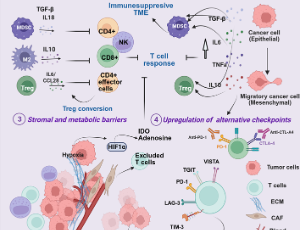
About Scientific Archives
Scientific Archives is a global publisher initiated with the mission of ensuring equal opportunity for accessing science to research community all over the world. Spreading research findings with great relevance to all channels without any barrier is our goal. We want to overcome the challenges of Open Access with ensured quality and transparency.
